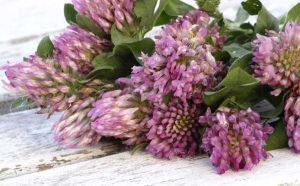What are phytoestrogens?
Phytoestrogens are natural substances that are found in more than 300 plants and are found mainly in their outer layers. Their chemical structure resembles that of polyphenols, and otherwise they resemble the body's own estrogens.
Phytoestrogens have different sub-groups of substances, the two most important being isoflavones and lignans.
Isoflavones are mainly found in soybeans and other legumes. Lignans are mainly found in oilseeds such as flaxseed and some cereals. The content of phytoestrogens in plants is quite different and varies further depending on the method of cultivation, processing, climate, time of harvest and storage conditions.
How do phytoestrogens work?
Phytoestrogens have an effect similar to that of the body's own estrogens, but their effectiveness is no more than one thousandth that of estradiol, the most potent endogenous estrogen.
With a diet rich in phytoestrogens, it is possible to consume such high amounts that they can supplement or replace the deficiency of the body's own estrogens.
Phytoestrogens have one very useful property: When estrogen is deficient, they exhibit an estrogen-like effect. However, if there are large amounts of estrogens in the body, they can weaken their effect, i.e. may also act as anti-estrogenic.
There is evidence that phytoestrogens suppress the growth of glandular tissue cells in the breast (anti-estrogenic effect) but have a positive effect on bone density (estrogen-like effect). There are various epidemiologic and initial clinical studies demonstrating beneficial effects of phytoestrogens on hot flashes and sweats, cardiovascular disease, osteoporosis, and breast cancer.
Phytoestrogens instead of hormones?
Menopause is traditionally thought to be associated with a drop in estrogen. However, there are other factors that can influence the degree and severity of unpleasant symptoms. Women who have moderate symptoms usually do not need hormone replacement therapy.
For most, the change to a more balanced and healthy diet, supplemented by herbal preparations, plays the role of therapy. Various studies prove that in menopause it is of great importance whether the diet contains a lot of fruits and vegetables, as well as plants, sources of phyto-estrogens. Thus, unpleasant symptoms such as hot flashes, sweating, poor concentration and others can be successfully prevented or reduced. The careful choice of food and phytosupplements helps in the prevention of diseases related to hormonal changes during menopause, such as osteoporosis, cardiovascular diseases.
What should be the nutrition
In order to get enough phytoestrogens naturally, the recommendations are to include mostly whole grains and raw fresh fruits and vegetables, preferably unpeeled, in your daily diet. Such a diet is recommended not only for menopause, but also for at least a decade before.
To date, there is no consensus on how many phytoestrogens we need per day. However, there are preliminary estimates that the optimal recommendation is for 40-45 milligrams of isoflavones per day in menopausal women. Interestingly, according to various estimates in Europe, less than 5 mg of isoflavones per day is now consumed through food.
More lifestyle tips
There are also some tips for lifestyle changes that may ease menopausal symptoms.
Limit alcohol, coffee or nicotine.
Make sure you have regular physical activity. These measures will not only help against hot flashes and insomnia, but you will also do something good for your health in the future.
In this way, you can reduce the risk of cardiovascular disease, osteoporosis or even breast cancer.
Phytoestrogens in medicinal plants and foods
There are various plants that contain phytoestrogens or other substances with estrogen-like effects. They are also reported to be effective for menopausal symptoms. Here's who they are:
- Black cohosh (Cimicifuga racemosa);
- Salvia (Salvia officinalis);
- Licorice root - liquorice (Glycyrrhiza glabra);
- Hops (Humulus lupulus);
- American ginseng (Panax quinquefolius);
- Chinese ginseng (Panax ginseng).
Foods high in phytoestrogens are:
- soy;
- legumes (beans, lentils, peas, chickpeas, etc.);
- cereals;
- citrus fruits;
- stone fruits;
- apples, pears (fruits with seeds);
- thorn;
- cabbage;
- Red clover.
Source: avogel.de
